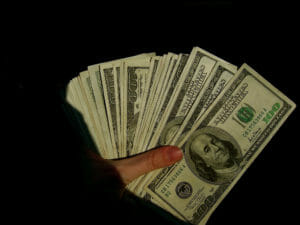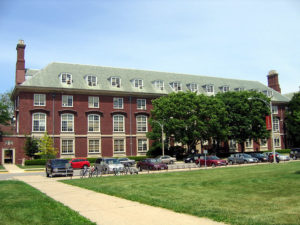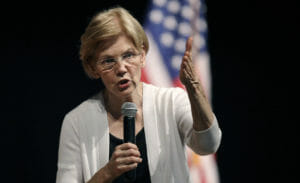Time to Crack Down on the Student Loan Cesspool
The markers of a mushrooming student loan scandal are identical to so many of the rest: The Bush administration, determined to turn the federal government into a favor bank for its corporate cronies, ignored every indicator that the $85-billion-a-year student loan industry was rife with corruption.WASHINGTON — The markers of a mushrooming student loan scandal are identical to so many of the rest: The Bush administration, determined to turn the federal government into a favor bank for its corporate cronies, ignored every indicator that the $85-billion-a-year student loan industry was rife with corruption.
Who is surprised to learn, as The Washington Post has reported, that just months after President Bush took office, his minions killed a Clinton-era proposal to crack down on the provision of goodies — sports tickets, trips, donations to favored foundations, lucrative consulting deals for university officials — by lending banks to colleges and their financial aid officers? The Clinton folks were worried that these so-called “inducements” given to win designation as a college’s “preferred lender” fostered unethical collaboration between the industry and schools. Preferred lenders rake in as much as 90 percent of a college’s loan business.
Never mind, the Bush people said. The lenders could police themselves.
So the lenders voluntarily heaped ever more lavish perquisites on colleges and financial aid officers, including “revenue sharing” arrangements under which institutions of higher education got a percentage of each loan taken out by students who, in innocence, had signed on with the preferred lender. New York Attorney General Andrew M. Cuomo calls it “a form of kickback scheme.” That Cuomo has uncovered this cesspool — not the federal Department of Education or Congress, when it was run by Republicans — is part of the pattern. For the first six years of the Bush administration, only a few congressional Democrats and the most intrepid outside investigators followed the stink.
Now that Democrats control Capitol Hill, investigators will likely expose more unsavory collusion. The probes and new regulations are necessary to end these sweetheart deals, which resemble nothing so much as those garbage-collection contracts that keep Tony Soprano in silk suits.
But deception and self-dealing in the student loan program aren’t the core of the problem. The real trouble is that private-lender student loans are nothing more than corporate welfare.
Here is what the lending industry gets in the deal: The federal government assumes all risk against default. It fixes the interest rates, but the student’s interest payments on these risk-free loans go to the lender, not the Treasury. Still more taxpayer subsidies are given to lenders to “induce” them — there’s that word again — to participate in the program. “The student loan system is effective in getting dollars to kids,” says Michael Dannenberg, director of education policy at the nonpartisan New America Foundation. “But from a taxpayer standpoint, it’s a public policy disgrace.” He suggests that lenders compete directly for student business, rather than have colleges act as gatekeepers.
But independent studies invariably have shown that it’s much more cost effective to cut out the banks altogether and have the government lend directly to students.
The Bush administration’s budget office has estimated that the federal government’s subsidy of private-lender student loans is 11 percent — but only 3.65 percent on loans made directly by the government. That is, for every $100 lent, the private system costs taxpayers about $7 more than the smaller, direct-lending program, according to an analysis of Bush’s fiscal 2007 budget by the Center for American Progress. In fact, the Congressional Budget Office has estimated that the government actually makes money on its direct loans to students because it collects the interest.
So why are taxpayers shoveling billions to a costly — and shady — student loan industry? Because congressional Republicans want us to.
President Bill Clinton proposed to greatly expand direct lending to students, partly to achieve budget savings and partly to broaden students’ access to college money. He was succeeding until the Republican takeover of Congress in 1994, when lawmakers throttled the effort. These apostles of competition demanded that the Education Department stop encouraging colleges to switch to the direct-loan program, while allowing the lending industry to continue its “inducements.” Naturally, the idea was sold under the guise of giving students “choice.”
It’s worked out about the same way as “choice” — that is, taxpayer subsidies to the managed-care insurance industry — has for Medicare. Just as in the student loan program, every single analysis of Medicare managed-care has shown that it costs more per patient than the traditional, government-run insurance program. Still, Congress pumps extravagant sums into Medicare managed care. Naturally the favor is returned in the form of campaign contributions. So it is with private lenders in the student loan program.
Cleaning up the private student lending industry now is imperative. Killing it altogether would be even better.
Marie Cocco’s e-mail address is mariecocco(at symbol)washpost.com.
© 2007, Washington Post Writers Group
Your support matters…Independent journalism is under threat and overshadowed by heavily funded mainstream media.
You can help level the playing field. Become a member.
Your tax-deductible contribution keeps us digging beneath the headlines to give you thought-provoking, investigative reporting and analysis that unearths what's really happening- without compromise.
Give today to support our courageous, independent journalists.




You need to be a supporter to comment.
There are currently no responses to this article.
Be the first to respond.